13 ways to create an eco-friendly garden
Follow horticulturalist Matt James's advice to creating a garden that is eco-friendly – and beautiful

The environment is – rightly so – on everyone's minds, and if you have a garden, you have an opportunity to contribute to protecting the natural world. But what does a eco-friendly garden actually look like, and what features does it have? You might imagine an untamed, overgrown jungle teeming with wildflowers and insects. Nowadays, however, even the slickest contemporary garden designs can be environmentally friendly, thanks to a combination of ethically-sourced materials and innovative technology. Plan the perfect eco-friendly garden with the help of horticulturalist Matt James’ advice.
Then get more garden ideas in our ultimate gallery.
- Find out the best way to design a garden in our guide
1. Recycle and reuse materials
The main concern is the origin, extraction, manufacture and installation of materials in structures, paths, walls and patios. Using recycled materials instead is a great way to go green. As reclamation yards, especially those in cities, can be expensive, trawl through out-of-town yards and junk shops for materials.
Check out eBay.co.uk and Freecycle.org – tin baths and buckets, clay pipes and old scaffolding boards can be put to good use. Recycled materials give you the chance to exercise some creativity, bringing character and time-worn charm to a setting. They also enable you to amplify your home’s identity and its design style further. Old hand-made bricks from reclamation yards work perfectly with a Victorian terraced house, for example.
‘New’ materials such as paving made from recycled concrete aggregate are now widely available (try Bradstone), so is recycled plastic decking (from Arbordeck) that is moulded to look like real wood.
Many companies now sell pots, fencing and furniture made from recycled wood and plastic. The Living Ethically Directory and the Recycled Products Guide list hundreds of them.
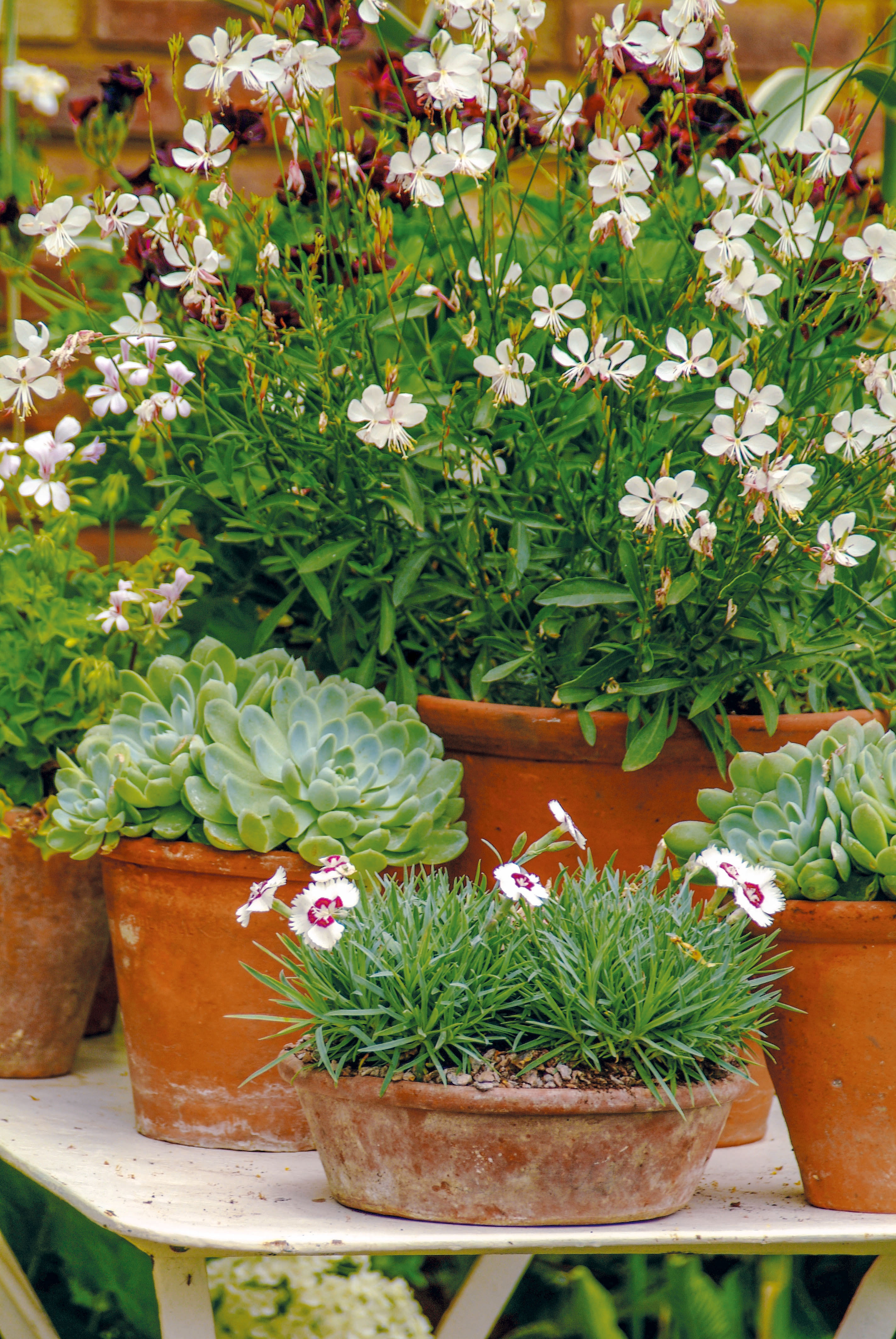
2. Choose eco materials
Green materials sourced and made by the local community feature strongly in sustainable gardens. Choosing them helps to reduce your carbon footprint as they have few air miles attached, plus most of them use little or no cement, the production of which accounts for more than five per cent of the world’s carbon emissions. They also give gardens a ‘sense of place’ by linking them to the local surroundings, which is especially important in rural settings. Materials such as cob (clay and straw), oak, rammed earth, log walls, woven willow, chestnut paling timber and even straw bales are full of character. You will need to consider cost versus durability more keenly than usual, but the suppliers and craftsmen will be able to advise you.
Get small space home decor ideas, celeb inspiration, DIY tips and more, straight to your inbox!
What works best visually depends on where you live and what you can obtain easily, so find out what is available in your area. Bear in mind that while raw materials are cheaper, labour costs won’t be – traditional materials need specialist skills that are passed down over generations.
Get more advice on choosing the best patio paving for your garden.

ABOVE (left-right): Trex Transcend Composite Decking is made from 95 per cent recycled material. Installed by Atkins Vause Ltd, this deck is Spiced Rum with railings in Tree House and Vintage Lantern. Trex installations start from £130 per m² (+VAT) and are distributed by Arbordeck; This stylish garden’s paving is made from up to 83 per cent recycled content. Panache Textured comes from Bradstone.
3. Go for local materials
Choose materials and features, such as paving and pergolas, that have been sourced or built locally, as this will help reduce a garden’s carbon footprint and support nearby businesses. For timber products and decking, look for a Forest Stewardship Council (FSC) or Programme for the Endorsement of Forest Certification (PEFC) logo, for wood originating from certified plantations.
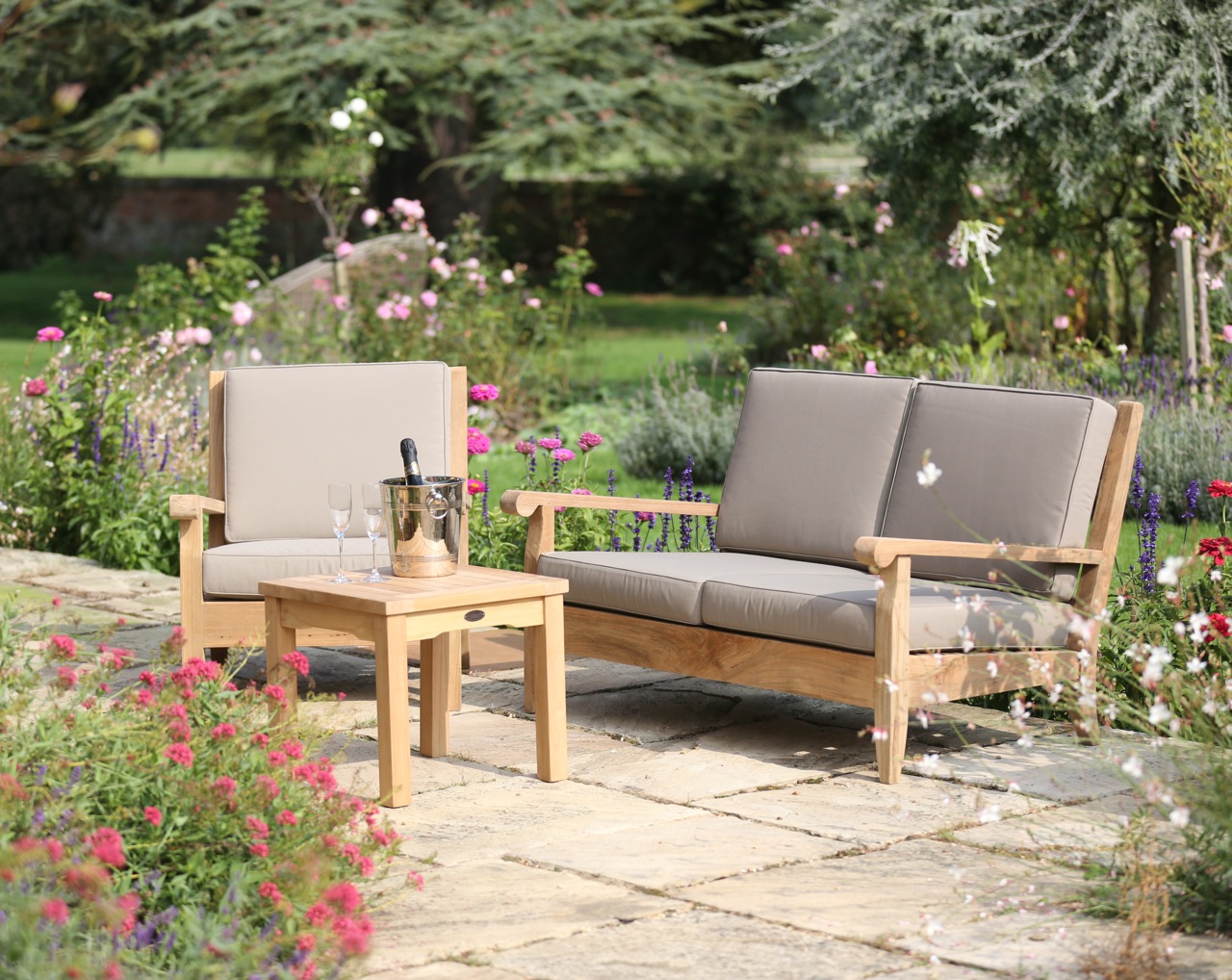
Rosemoor Reclaimed Outdoor Armchair by Jo Alexander
4. Conserve water
Water conservation is essential, so install a butt on every downpipe – you can choose weathered oak barrels or the ubiquitous green plastic tubs. If you have the space, consider an underground rain tank. Larger ones can easily collect enough water for the average garden, plus you can set them up to flush your WC. Clever cost-cutting irrigation helps too. Don’t use a sprinkler on the garden – water the roots of plants without wasting it on the leaves (automated watering systems are useful here); repair leaky pond liners; buy large pots for plants as they don’t dry out as quickly; and don’t mow the lawn too low in hot weather.
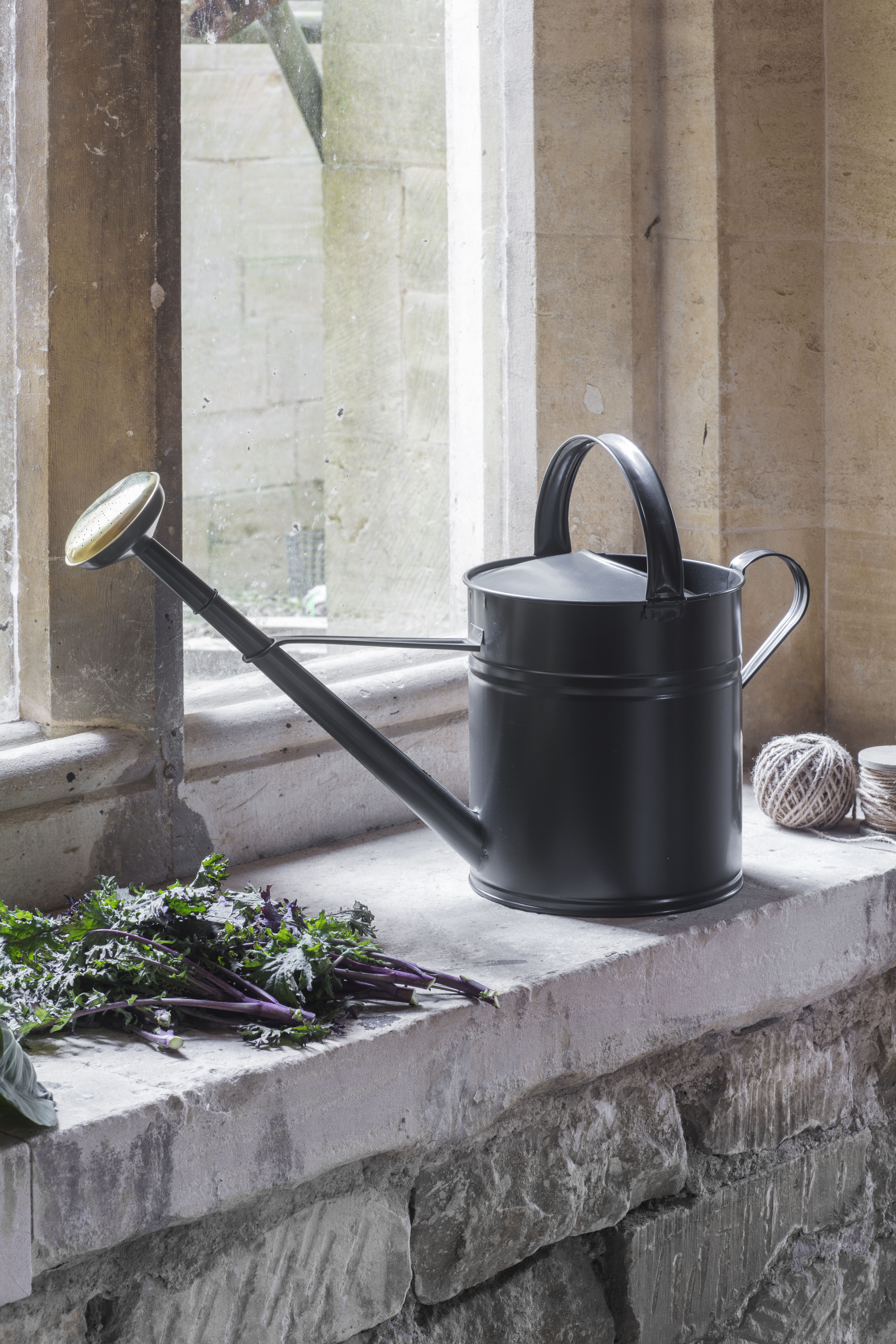
10L Watering Can in Carbon from Garden Trading
5. Use permeable paving
Water run-off from concrete-covered gardens in towns and cities causes localised flooding and affects wildlife significantly. To tackle this problem, legislation has been introduced to regulate the use of solid surfaces in front gardens. You must now use permeable surfacing materials. If you plan to build a driveway larger than 5m² with impermeable materials like York stone you’ll need planning permission, unless it’s designed to drain into a lawn or flowerbed, which isn’t always possible.
Crunchy gravel and slate chippings are the obvious permeable alternative to solid paving, but there are lots of other materials available – from porous asphalt and block paving to grass reinforced with recycled plastic grids. For more details, including the cost and construction of each one, download the pdf document from gov.uk.
How to choose the best gravel for your garden.
Call in a professional if you’re not a competent DIYer. Driveways need a substantial sub-base, usually with a proper edge, and special permeable materials must be laid carefully to work effectively.
Find out more about planning and designing a driveway.
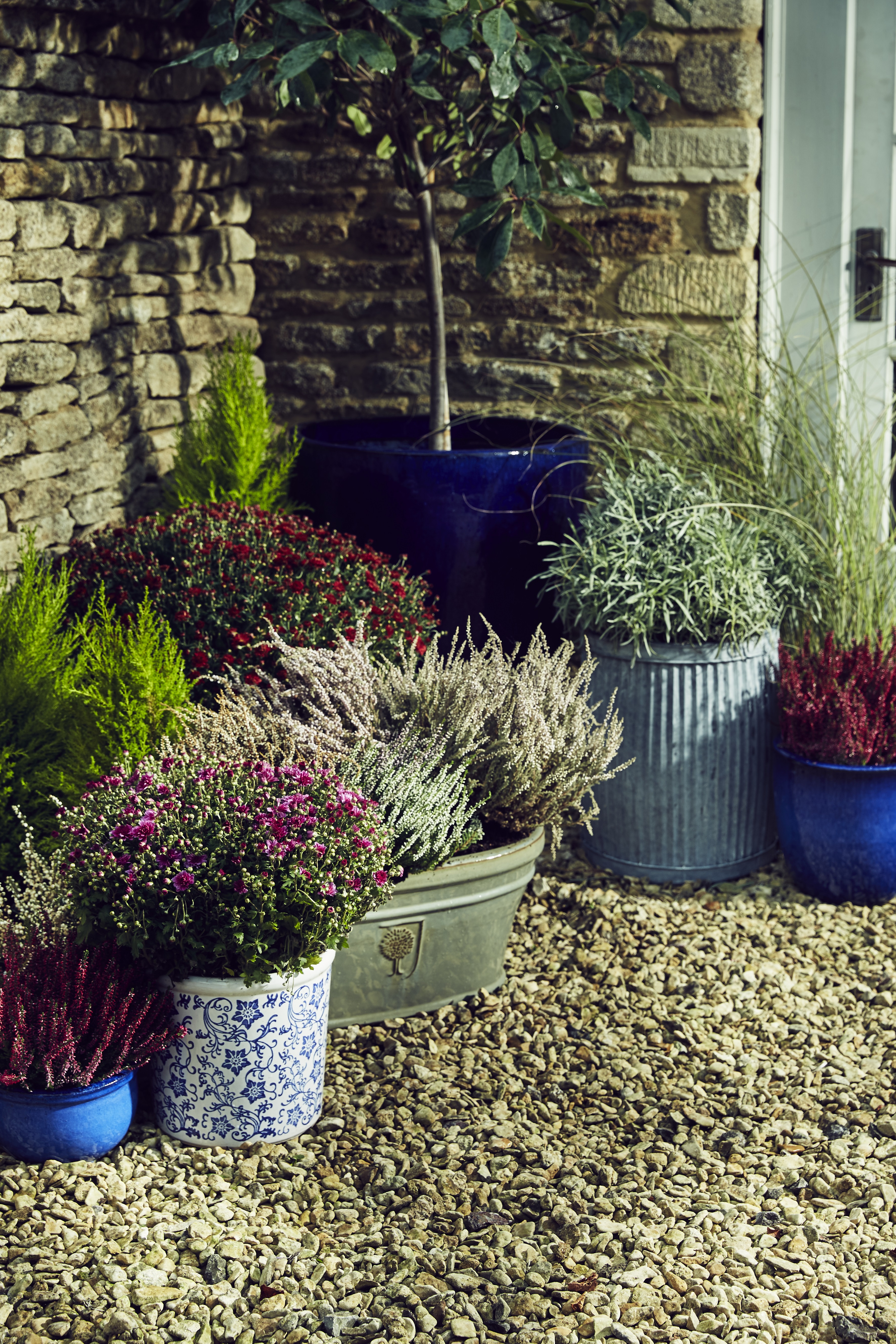
6. Cut back on chemicals

You can employ plenty of natural methods to combat pests in your garden.
Natural pest control:
- Knock greenfly off plants by using a strong jet of water.
- Use copper slug rings for slug control.
- Pick young caterpillars off brassicas such as cabbage or, better still, cover the plants with garden fleece or fine Environmesh netting (from garden centres).
- Use garlic, elder and rhubarb leaf sprays to control garden pests.
- Leave messy garden corners untouched so slug-eating hedgehogs and slow-worms can hide away from predators.
- Erect boxes to attract nesting birds to help with caterpillar control.
- Grow dill and fennel to entice greenfly-munching hoverflies.
- Build a small wildlife pond – you’ll attract all sorts of beneficial insects.
Companion planting:
- Onions and chives grown around roses will help combat black spot disease.
- Grow carrots and leeks together to repel each other’s garden pests.
- Pungent-smelling French marigolds will keep aphids off tomatoes.
- Grow basil to make tomatoes taste better.
- Plant horseradish near potatoes to increase their resistance to disease.
How to tackle weeds:
- Spread a 5-7.5cm (2-3in) layer of compost or shredded bark around plants to repel weeds. It also keeps the roots snug during winter and conserves water.
- Kill existing annual weeds by covering them with plastic sheeting weighted down.
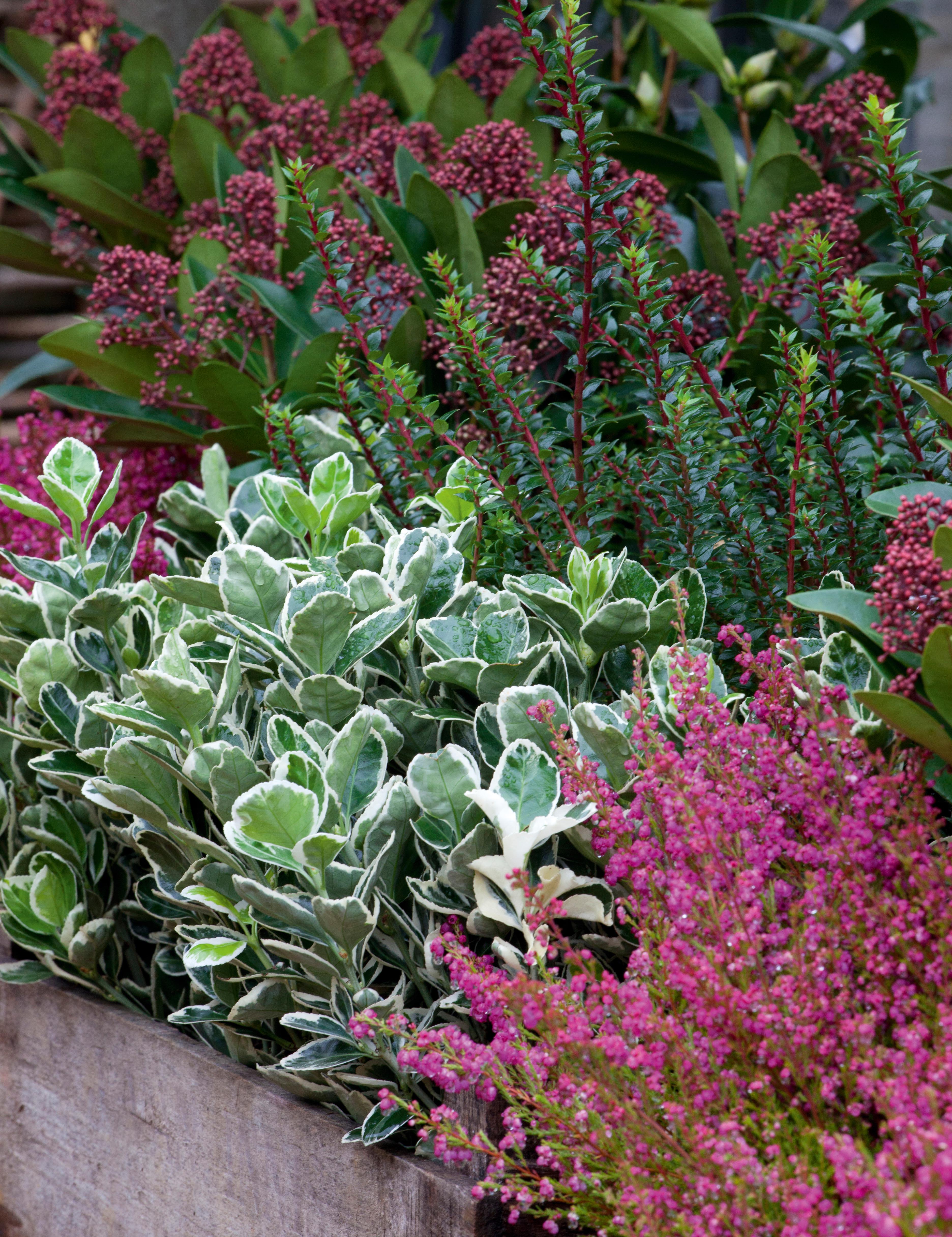
- Create the perfect kitchen garden, large or small
- While you can learn how to grow your own indoors and out in our advice piece
7. Invest in a green roof
Eco roofs are becoming increasingly popular as they help increase biodiversity, provide good insulation, improve air quality and control water run-off – they’re also very attractive. There are plenty of products available using different construction techniques – you can even retrofit an existing shed and garage if they are able to take the weight.
Visit Livingroofs.org for ideas.
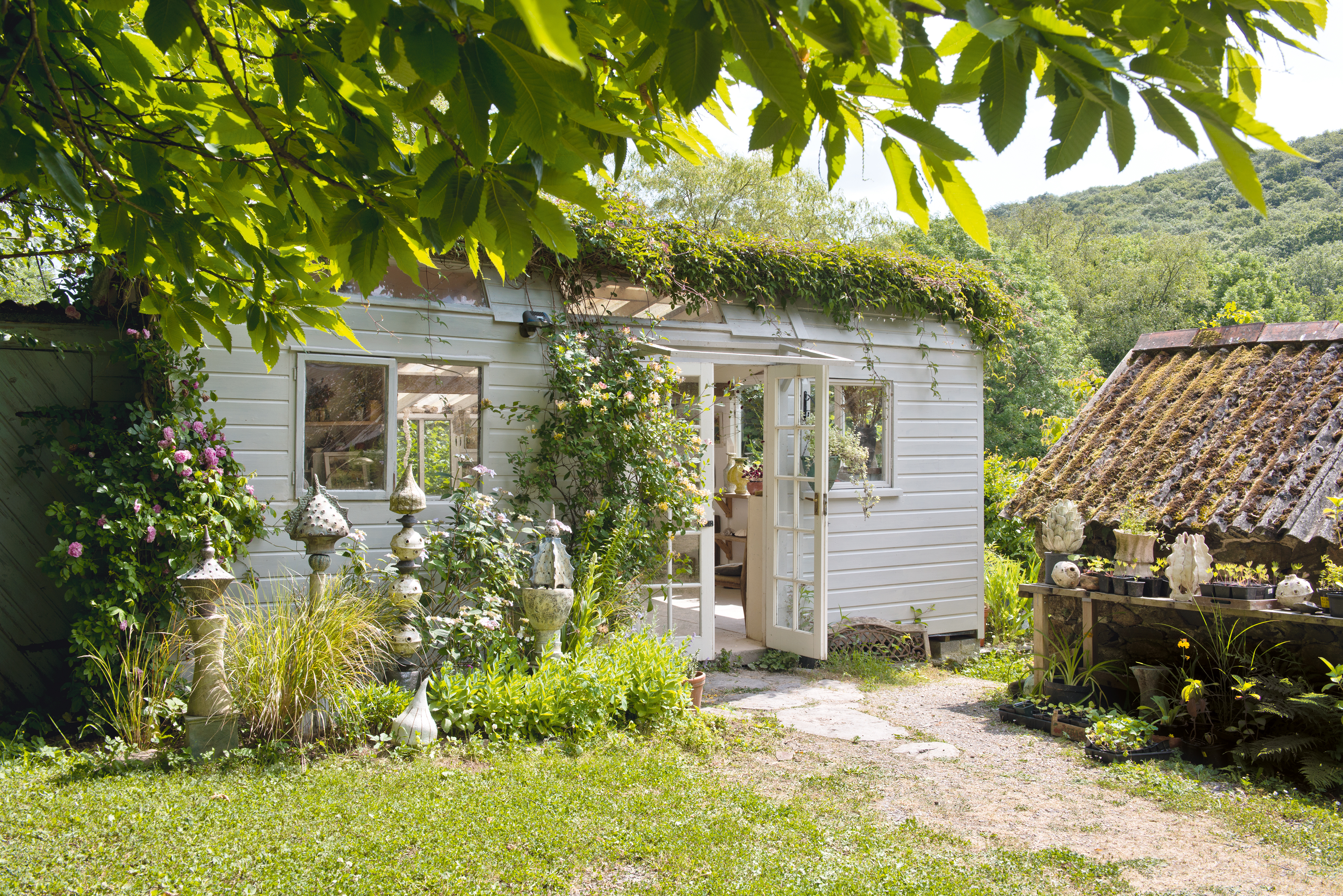
8. Choose eco-friendly plants

Echinacea purpurea
Choosing the best plants is an important design tool, especially if you're looking to create an organic garden. In an eco-friendly garden, the best plants will provide food and shelter, creating perfect habitats for beneficial wildlife. Choose lots of local berry-producing plants and trees, such as hawthorn, which might be growing nearby – birds and insects will already be used to them, so they’ll visit your garden more frequently if you grow them.
Hedges are certainly better than walls as they’re ideal nesting sites and offer protection from predators. At the very least you should grow plenty of climbers – ivy is particularly good, providing both protection and a rich source of nectar in autumn/winter when there’s little food around. Even nectar-rich, open-faced flowers such as echinacea and buddleia will make a difference. These are preferable to modern double flowers that don’t have proper nectaries to feed garden-friendly insects.
The key principle to planting is always putting them where they’re happiest. Contented plants take care of themselves, but stressed ones need constant feeding and watering, so make sure you don’t plant your sun-lovers in the shade, for example, or vice versa. Matching the right plant to the right place will also help keep garden maintenance time to a minimum.
In recent years, botanists, ecologists and contemporary planting designers have taken this concept to a new level, resulting in naturalistic, ecologically sound meadow or ‘prairie-like’ plantings that feature colourful perennials and seas of ornamental grasses. Planting on this scale often needs room, but it’s still possible to achieve in a small garden. Make sure to avoid overly competitive perennials, and keep the plant colour palette simple to avoid a ‘bitty’ look.
Get more advice on how to choose plants for your garden and find out how to plant your own wildlife garden in our guide.
Also, did you know that many garden plants are beneficial to humans as well as wildlife? Discover the best plants for health in our guide.
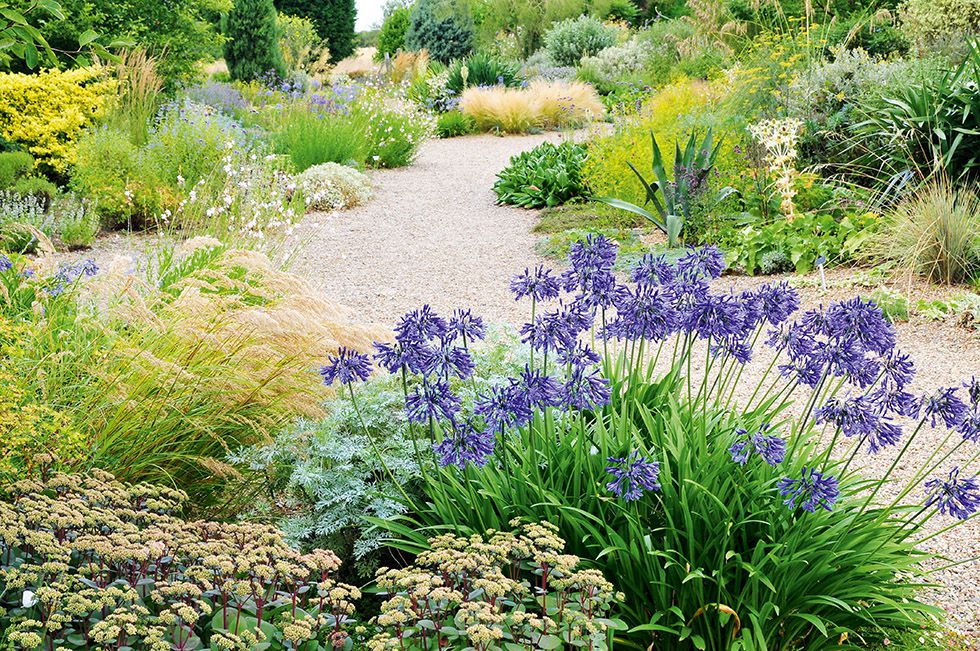
9. Increase wildlife and biodiversity

Encouraging wildlife makes your garden far more entertaining, as well as helping with pest control – slug-eating hedgehogs and slow-worms love piles of leaves and logs. To attract birds that help with caterpillar control, erect nest boxes and put out a variety of food. Song thrushes love dried fruit, blackbirds adore rotten apples, and sunflower seeds will attract chaffinches and blue tits.
Entice bees by choosing plants with ‘open faces’; bright, showy blooms that flower throughout the year. Spring flowers are important for waking bees but are often overlooked; wallflowers, aubrietia and rosemary are all good pollen and nectar sources. For summer, catmint, thyme and lavender are particularly good. Ivy in flower is great in autumn. To help solitary bees, a special bee hotel provides the perfect nesting site.
Find out how to create your own luscious wildlife garden.
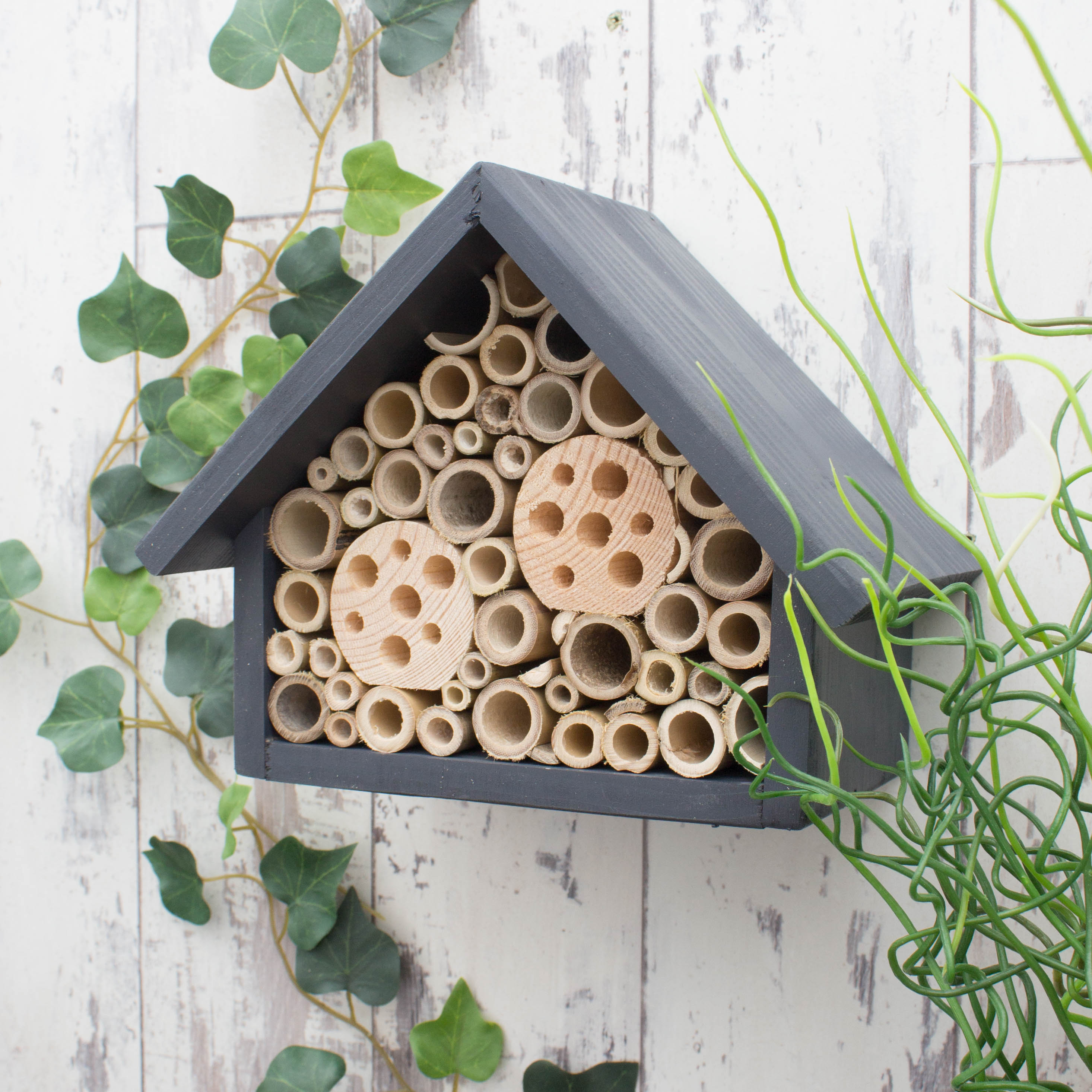
Wudwerx Bee Hotel, available at Not On The High Street
10. Improve your soil
Lots of compost and/or well-rotted manure will keep your soil in what gardeners call ‘good heart’. This creates a healthy soil teeming with essential micro-organisms, which in turn gives you healthy plants that don’t succumb to pests and diseases. Compost soaks up water like a sponge, too – useful in free-draining sandy soils.
Dig in a large bucketful every few feet when planting, or spread liberally around plants as a mulch each spring; this also helps stop light soils from being washed away in heavy rain
11. Make your own compost
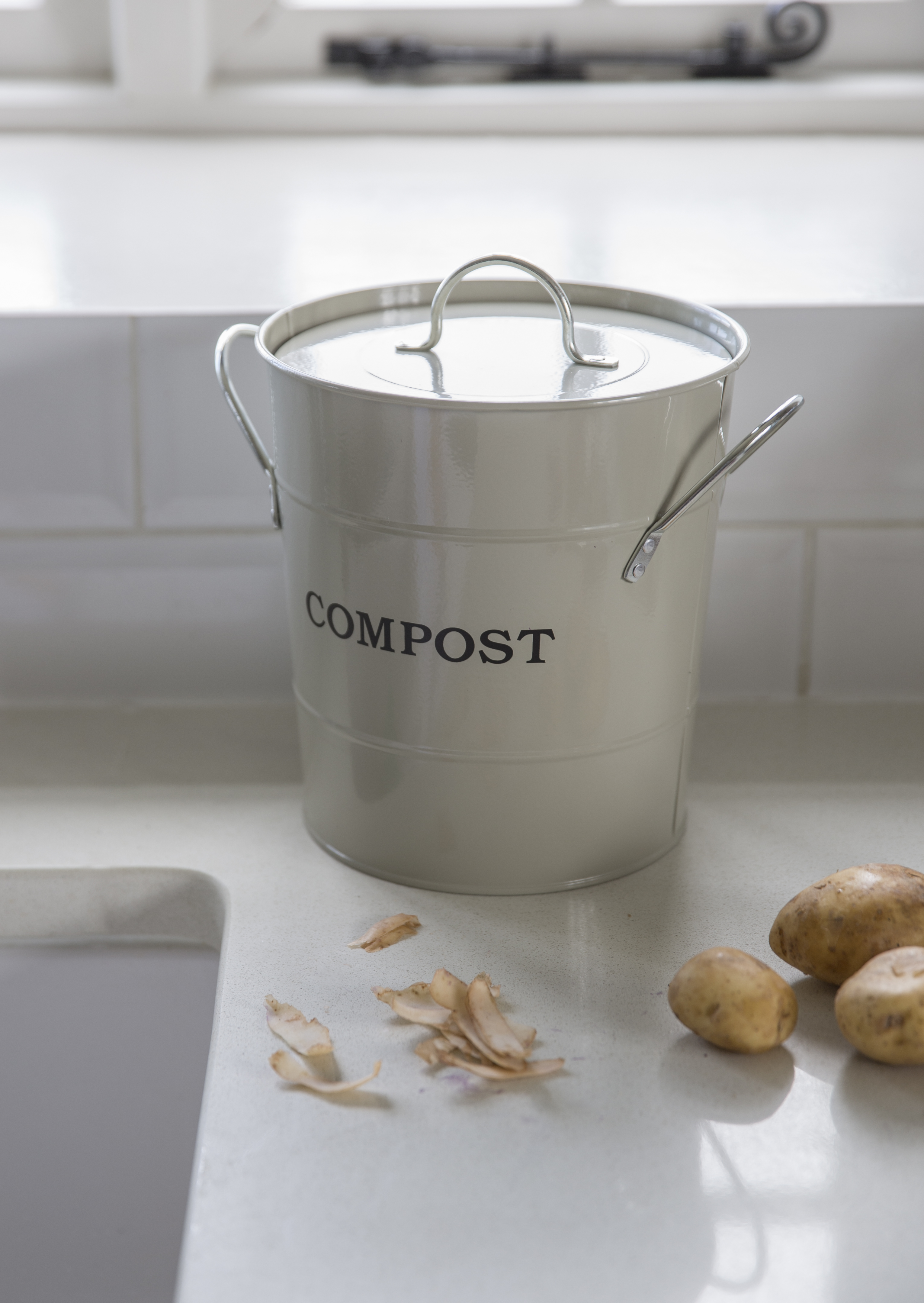
Compost Bucket in Clay from Garden Trading
Recycling green waste is important, too – homemade compost costs nothing to make, and will save money on bagged compost and soil conditioner from garden centres.
What to add to your compost:
- lawn clippings
- wood ash (in moderation)
- hedge trimmings
- veg peelings
- tea bags
- egg boxes
- leaves
- shredded newspaper and cardboard
- vacuum cleaner contents
Avoid cooked food, meat, pet faeces and glossy magazines.
12. Limit peat-based composts
Peat is dug from peat bogs, causing irreparable damage to precious natural habitats, and as it forms very slowly, simply isn’t sustainable either. The problem is that it’s great for growing plants as it’s sterile, easy to handle, and holds onto nutrients and water like a sponge.
To cut down your use, stop using peat as a mulch or soil conditioner, and instead use homemade compost, rotted farmyard manure and leaf mould, which perform better and are full of nutrients. Buy peat-free or reduced-peat compost for potting – it’ll say so on the bag – and you’ll now find that modern peat-based composts available to gardeners include some of the alternatives, such as bark, wood fibre, coir (coconut husk) or specially formulated green waste.
Substitutes do have their critics, due to poor products rushed on sale in the 1990s, but now most of the better peat-free alternatives perform fairly well, although cheaper products will need beefing up with fertiliser and watering. For the best results, buy tried-and-tested brands, such as New Horizon or Vital Earth, and peat-free products from Miracle Grow and Westland.
13. Create a natural garden

Gabion walls of timber, with drifts of verbena, nepeta and lavender, encourage wildlife into this garden, designed by Paul Martin for the RHS Hampton Court Flower Palace Show
‘Plant according to the garden, not the gardener,’ is the ethos at the heart of the natural garden, and looking to nature will provide inspiration and a template to follow. Work with the characteristics of your garden, not against them.
For example, in damp shade, embrace woodland plants and those that grow on woodland margins. For sunny slopes, consider Mediterranean plants like rosemary, juniper, bay and sage – plants with silvery or blue-grey leaves that have naturally adapted to such conditions. Waterlogged soil? Choose wetland plants – not only will your planting visually sit more comfortably, but also promote happy, healthy plants and suffer fewer pests and diseases.
More popular now than ever, native plants are tough, easy to grow and provide food and valuable habitats for wildlife. Ideal for a more relaxed design, they will also help to preserve our threatened plant heritage. Favourites include spiky teasels, gunmetal-coloured cotton thistle, and hardy cranesbills. Quick to colonise poor soils and sunny walls, the red, pink or white flowers of valerian, in particular, are stunning and last for ages.
Leave some parts of the garden untidy; nature likes it messy, so gather piles of leaves in undisturbed corners and collect logs and branches, rather than burn them (if they’re not diseased). You’ll encourage thousands of insects and foraging birds. Hedgehogs also find such spots irresistible to hibernate in.